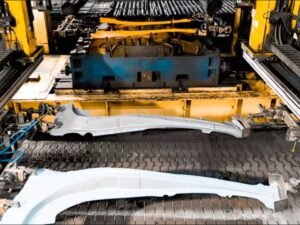CNC HDPE Machining Service
Jiangzhi provide custom HDPE CNC machining services from design optimization to production—delivering high-precision, tight-tolerance PE parts with fast turnaround and cost-effective pricing. Upload your CAD file to get an instant quote and start your project.

CNC Machining in HDPE Material
At Jiangzhi, we specialize in precision HDPE CNC machining services with tight tolerances, fast turnaround, and consistent quality. Whether you need prototypes or low-volume production, we help bring your designs to life—handling complex geometries and fine details with ease. Our one-stop plastic machining solution includes:
- HDPE material selection
- Precision milling and turning
- Part finishing and surface inspection
- Final quality control before shipping
Common HDPE parts applications include water-resistant enclosures, fluid system components, wear-resistant parts, and mechanical guides—especially in chemical, industrial, and food-grade environments. With advanced equipment and a dedicated team, we help you reduce lead times, streamline production, and meet your most demanding project timelines.
Our HDPE Machining Capabilities
| Price | $$$ |
|---|---|
| Tolerances | ±0.015mm |
| Maximum Part Size | 900mm x 600mm x 250mm |
| Minimum Feature Size | Φ 0.6mm |
| Wall Thickness | 0.75mm |
| Lead Time | About 3-6 days |
HDPE Properties for CNC Machining
HDPE (High-Density Polyethylene) is a lightweight, durable, and chemically resistant plastic ideal for CNC machining. It offers excellent impact strength, flexibility, and low moisture absorption, making it suitable for both structural and functional parts. CNC machining HDPE allows for clean cuts with minimal tool wear, resulting in precise, cost-effective components.
| Tensile Strength, Yield (MPa) | Elongation at Break | Hardness | Impact Strength | Heat Deflection | Heat Deflection Temperature | Melting Point |
|---|---|---|---|---|---|---|
| 20–37 MPa | 100–600% | R60–R100 | 80–120 J/m | 70–90°C | 50–70°C | 130–137°C |
- The above parameters represent the baseline performance of the materials. Actual application should be dynamically optimized based on specific working conditions.
Related Process
Looking to Start Your next HDPE CNC Machining project?
Thousands of companies trust us for custom HDPE machining service. Talk to our engineers or request a quote to see how we can support your part production.
Advantages & Disadvantages of HDPE CNC Machining
Advantages
- Excellent machinability – easy to cut and shape with CNC tools
- High chemical resistance – performs well in corrosive environments
- Moisture & impact resistance – ideal for outdoor and fluid applications
- Lightweight & durable – strong yet low density for efficient production
- Low cost – affordable for both prototyping and production runs
Disadvantages
- Lower dimensional stability – may require tighter process control
- Soft surface – more prone to scratches compared to harder plastics
- Poor UV resistance – degrades with long-term sun exposure unless stabilized
- Thermal expansion – may require design compensation in precision assemblies
Surface Finishing Options for CNC Machined HDPE Parts
Standard finish with visible tool marks; suitable for functional prototypes and internal components.
Uses abrasive media to create a uniform matte or satin finish; also improves coating adhesion on plastic or metal surfaces.
Adds logos, text, or identification marks via silk screen or pad printing, ideal for branding or part tracking.
Removes machining marks and evens out surface texture; ideal for prototypes and parts where appearance is not critical.
Painting and powder coating provide colorful, durable, and corrosion-resistant finishes.
Deposits metal layers such as nickel or chrome on parts, improving wear resistance, conductivity, and aesthetic quality.
Produces a smooth, glossy finish; commonly applied to plastics like PC or PMMA for enhanced clarity and premium look.
Chemical treatment for ferrous metals, creating a dark, corrosion-resistant surface with minimal thickness.
Electrochemical process for aluminum that enhances corrosion and wear resistance, with options for colored finishes.
Jiangzhi HDPE CNC Machining Parts are Guaranteed





